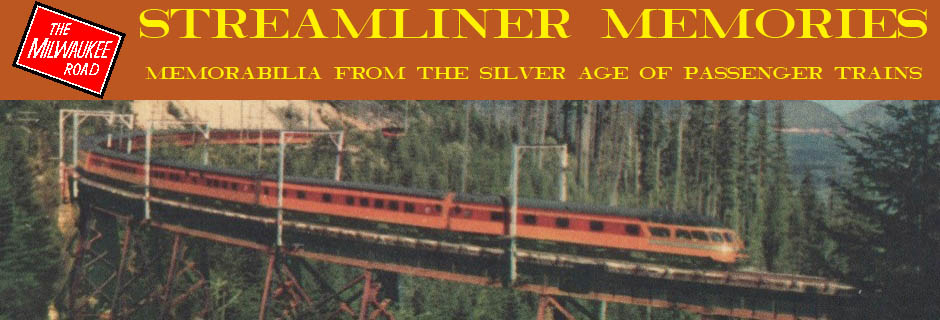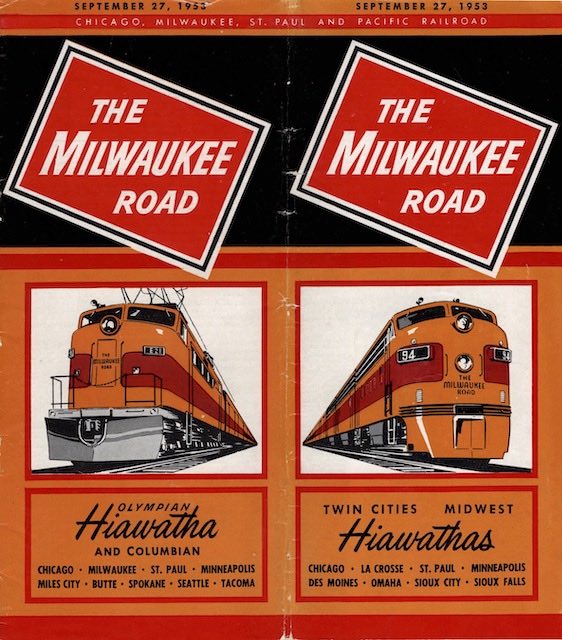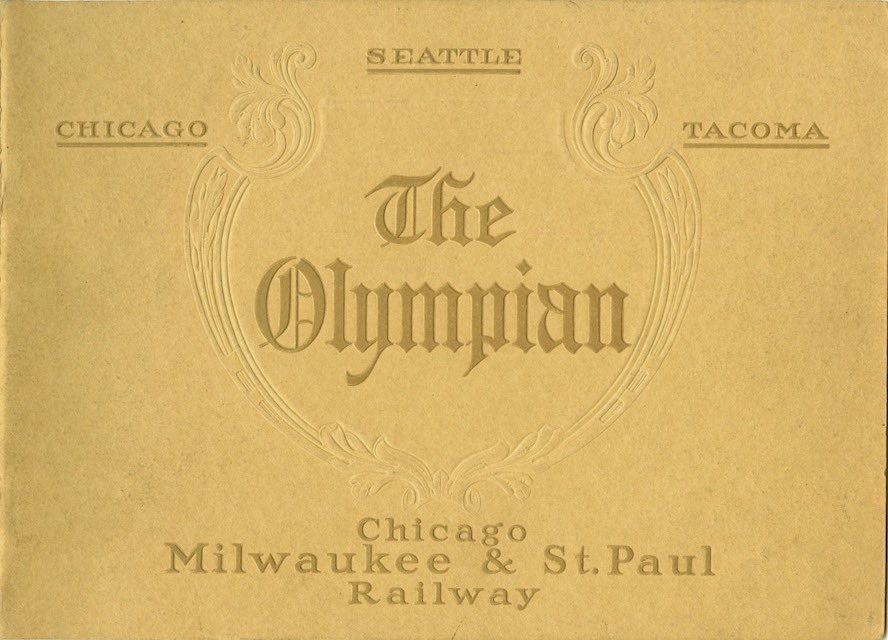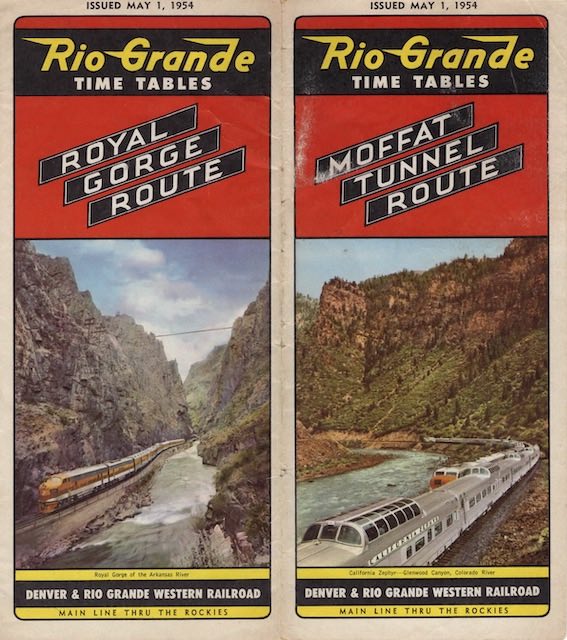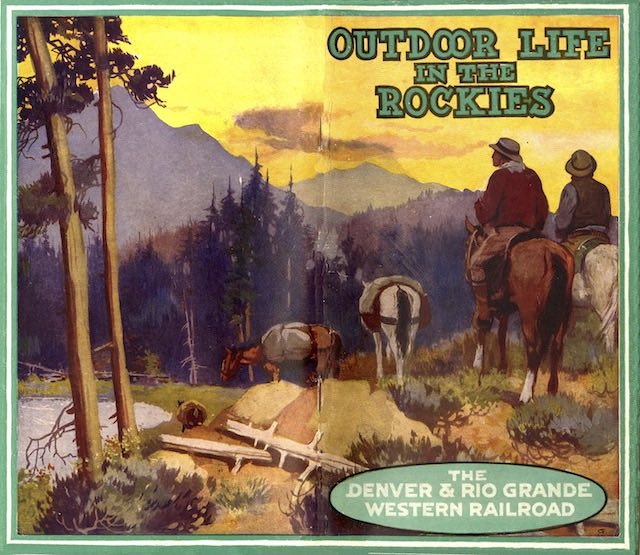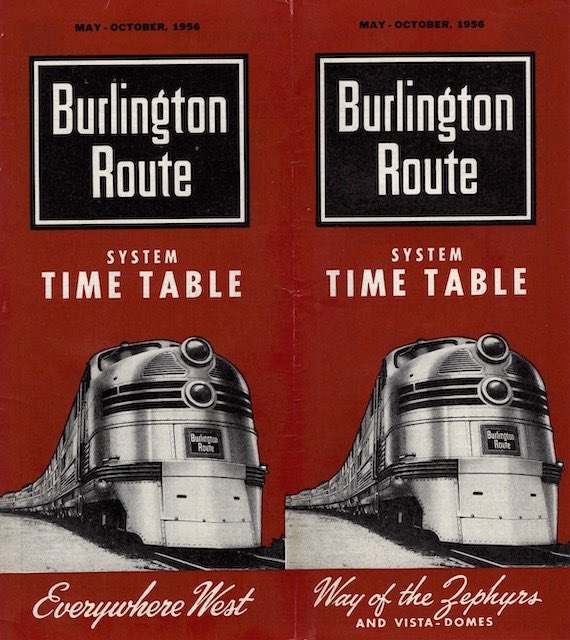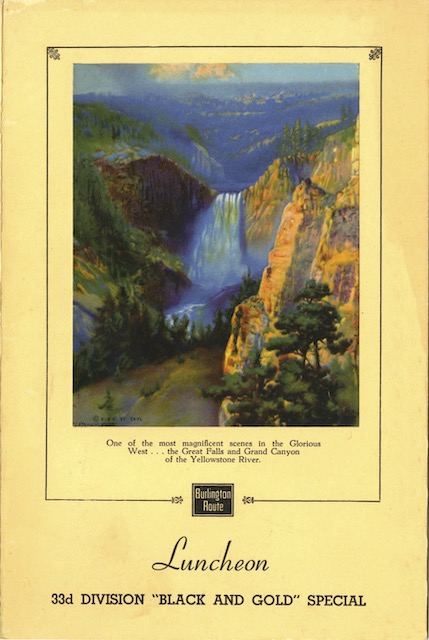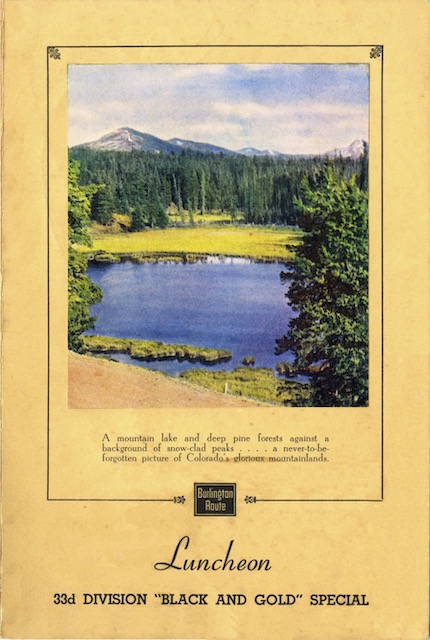The Columbian, Milwaukee’s secondary Chicago-Seattle train, was discontinued in 1955, leaving just the Olympian Hiawatha in this corridor. Because the railroad had to get permission from each state to terminate the train, the Columbian disappeared in stages: first ending service in Washington in January, Idaho and Montana in the spring, a corner of North Dakota later in the spring, and South Dakota in the summer.
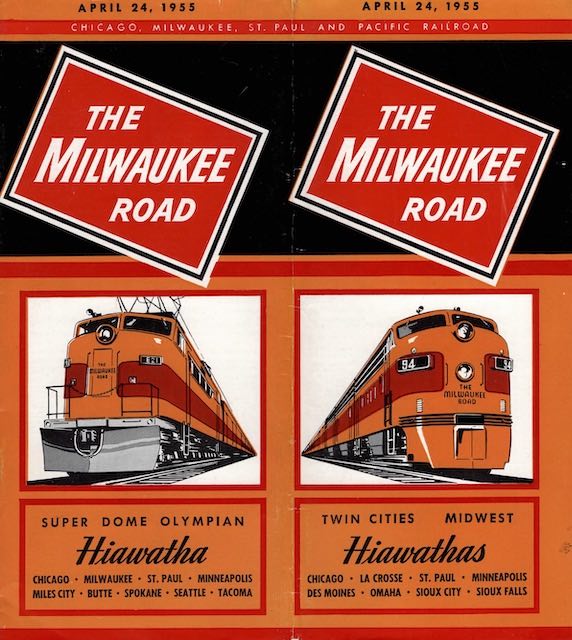 Click image to download a 22.8-MB PDF of this timetable.
Click image to download a 22.8-MB PDF of this timetable.
Unlike the Great Northern, whose Empire Builder and Western Star were practically equals in the early 1950s, the Olympian Hiawatha was always clearly superior to the Columbian. While the former had a diner, Super Dome, and the skytop observation car, the latter just had a grill car with “buffet service.” The 1953 timetable noted that “dinner meals [were] obtainable at interstate restaurants.” The Hiawatha coaches also had legrest seats, while the Columbian‘s seats did not.
The back page ad on this timetable describes the Oly Hi‘s Super Domes as a “double-decked vacation” because people would watch the scenery from the upper deck or enjoy a drink in the lounge car of the lower deck. “No extra cost,” says the ad, indicating that the dome was open to coach, Touralux, and Pullman passengers. While the skycap observation car was only open to Pullman travelers, the diner was open to all passengers. Except for people getting on or off the train at a stop not served by the Olympian Hiawatha, there was little incentive for anyone to take the Columbian.
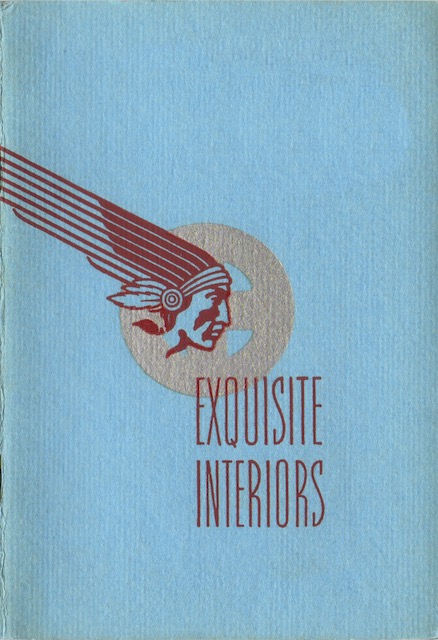 Click image to download a 7.2-MB PDF of this 28-page booklet.
Click image to download a 7.2-MB PDF of this 28-page booklet.